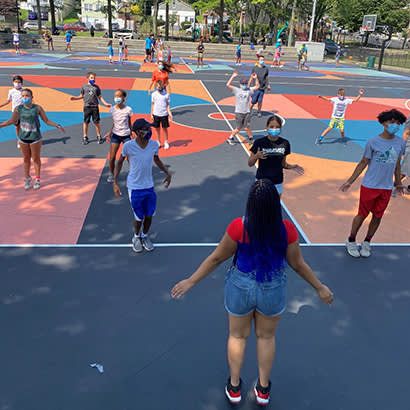
For an enhanced digital experience, read this story in the ezine.
In 2017, an NRPA study found that local park and recreation agency operating and capital expenditures across the United States generated $166 billion in economic activity and supported 1.1 million jobs. In a few months, NRPA will be sharing an update of that national study (including data for all 50 states and the District of Columbia). There are many other facets to parks and recreation’s economic story, including environmental, business development, tourism, and higher property values (and a larger tax base).
Another economic benefit of parks and recreation focuses on health and wellness. Greater physical activity, access to green spaces, and services and programming that promote better health outcomes lead to less reliance on medication, fewer trips to the hospital and lower healthcare costs. Last year, NRPA launched a partnership with researchers at the Urban Institute to develop resources that help park and recreation professionals and advocates make a health-based case for parks, including the development of a method to attach an economic value to those health benefits. In collaboration with an advisory committee of park and recreation professionals and health and equity experts, the multi-year project will result in the creation of an adaptable and practical tool that will provide an economic value of the health impacts of parks.
The first product from this partnership is a summary of research findings that show a linkage between parks and recreation and better health and well-being outcomes. The Urban Institute team canvassed a wide variety of research resources, including studies by either NRPA or the Urban Institute, academic journal research studies, case studies, practitioner reports, and guidance documents and toolkits. In all, the researchers drew from more than 100 reference documents that paint how parks and recreation lead to healthier communities.
The resulting report, The Health Benefits of Parks and their Economic Impacts: A Review of the Literature, presents a thorough review of what we know about how parks and recreation support healthy, productive lives and resilient, cohesive communities. The report divides its findings into several categories:
- Parks in Context – Park size, quality, amenities and composition all can affect health. This section of the report highlights research oriented around quality and accessibility, urban versus rural locales, the size of the park, and the impact that perception (and reality) of safety has on park usage.
- Physical Health – This section features studies that show a linkage between park access and increased physical activity and looks at how recreational programming, outreach and communication activities can lead to greater levels of physical activity. The result shows a correlation between increased physical activity and better health outcomes.
- Mental Health – There is significant research that connects parks with positive mental health, resulting from both increased physical activity and being near green space. This may include reductions in stress levels and antisocial behaviors.
- Social Health – Parks have the ability to promote social cohesion, which is associated with reduced levels of depression, stress and cardiovascular issues.
- Environmental Health – Parks have the ability to improve air quality, help communities adapt to changes in the climate (including providing shade in areas seeing increased heating), and provide support to disaster planning and social resilience.
The studies that this report highlight (each with full citations, so you may review the research) provide a holistic view of how parks and recreation make a wide and lasting positive impact on the health and well-being of our communities. Our next step is to use this research as the foundation of an easy-to-use resource to help you calculate an economic value of these benefits that you would use to make the case for greater and more sustainable park and recreation funding. In the meantime, I encourage you to review this report and use its findings as you tell your community why parks and recreation is essential.
Kevin Roth, is NRPA’s Vice President of Research, Evaluation and Technology.

